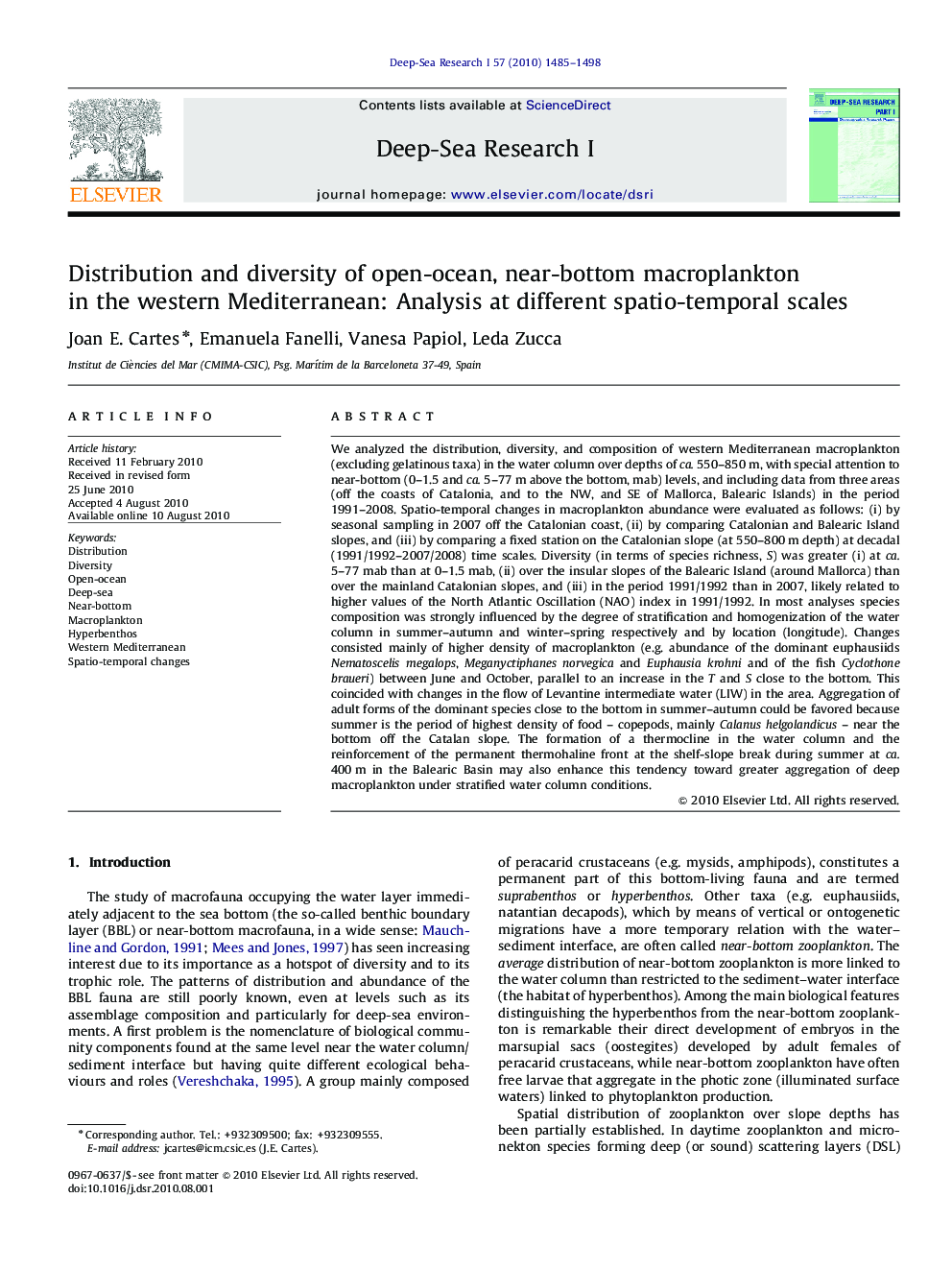| کد مقاله | کد نشریه | سال انتشار | مقاله انگلیسی | نسخه تمام متن |
|---|---|---|---|---|
| 4535184 | 1326089 | 2010 | 14 صفحه PDF | دانلود رایگان |

We analyzed the distribution, diversity, and composition of western Mediterranean macroplankton (excluding gelatinous taxa) in the water column over depths of ca. 550–850 m, with special attention to near-bottom (0–1.5 and ca. 5–77 m above the bottom, mab) levels, and including data from three areas (off the coasts of Catalonia, and to the NW, and SE of Mallorca, Balearic Islands) in the period 1991–2008. Spatio-temporal changes in macroplankton abundance were evaluated as follows: (i) by seasonal sampling in 2007 off the Catalonian coast, (ii) by comparing Catalonian and Balearic Island slopes, and (iii) by comparing a fixed station on the Catalonian slope (at 550–800 m depth) at decadal (1991/1992–2007/2008) time scales. Diversity (in terms of species richness, S) was greater (i) at ca. 5–77 mab than at 0–1.5 mab, (ii) over the insular slopes of the Balearic Island (around Mallorca) than over the mainland Catalonian slopes, and (iii) in the period 1991/1992 than in 2007, likely related to higher values of the North Atlantic Oscillation (NAO) index in 1991/1992. In most analyses species composition was strongly influenced by the degree of stratification and homogenization of the water column in summer–autumn and winter–spring respectively and by location (longitude). Changes consisted mainly of higher density of macroplankton (e.g. abundance of the dominant euphausiids Nematoscelis megalops, Meganyctiphanes norvegica and Euphausia krohni and of the fish Cyclothone braueri) between June and October, parallel to an increase in the T and S close to the bottom. This coincided with changes in the flow of Levantine intermediate water (LIW) in the area. Aggregation of adult forms of the dominant species close to the bottom in summer–autumn could be favored because summer is the period of highest density of food – copepods, mainly Calanus helgolandicus – near the bottom off the Catalan slope. The formation of a thermocline in the water column and the reinforcement of the permanent thermohaline front at the shelf-slope break during summer at ca. 400 m in the Balearic Basin may also enhance this tendency toward greater aggregation of deep macroplankton under stratified water column conditions.
Journal: Deep Sea Research Part I: Oceanographic Research Papers - Volume 57, Issue 11, November 2010, Pages 1485–1498